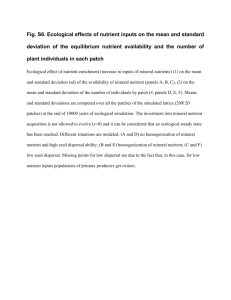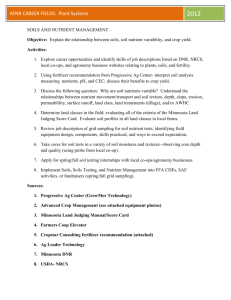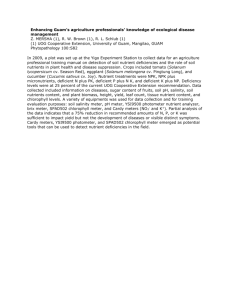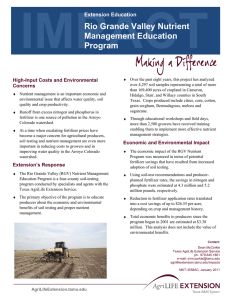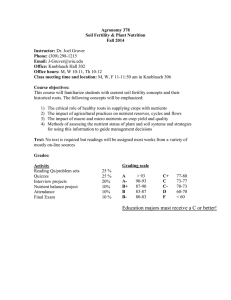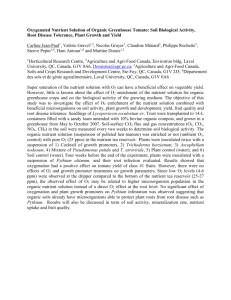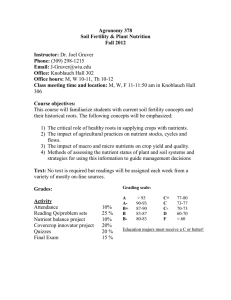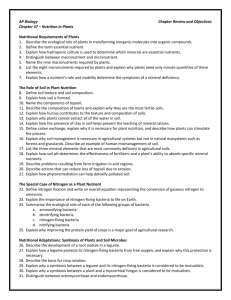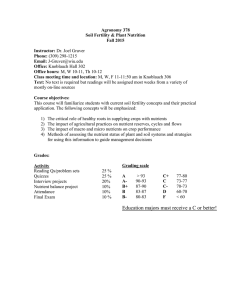BIOL112 -- OUTLINE #8 -- PLANT NUTRITION AND SOILS
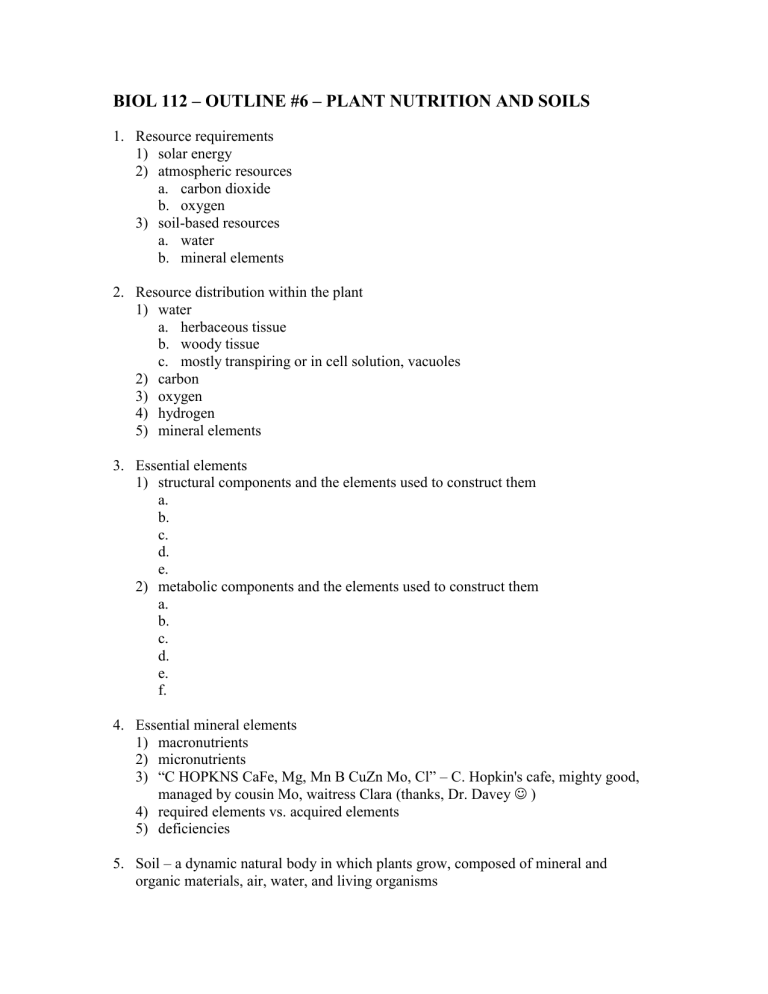
BIOL 112 – OUTLINE #6 – PLANT NUTRITION AND SOILS
1.
Resource requirements
1) solar energy
2) atmospheric resources a.
carbon dioxide b.
oxygen
3) soil-based resources a.
water b.
mineral elements
2.
Resource distribution within the plant
1) water a.
herbaceous tissue b.
woody tissue c.
mostly transpiring or in cell solution, vacuoles
2) carbon
3) oxygen
4) hydrogen
5) mineral elements
3.
Essential elements
1) structural components and the elements used to construct them a.
b.
c.
d.
e.
2) metabolic components and the elements used to construct them a.
b.
c.
d.
e.
f.
4.
Essential mineral elements
1) macronutrients
2) micronutrients
3)
“C HOPKNS CaFe, Mg, Mn B CuZn Mo, Cl” – C. Hopkin's cafe, mighty good, managed by cousin Mo, waitress Clara (thanks, Dr. Davey )
4) required elements vs. acquired elements
5) deficiencies
5.
Soil – a dynamic natural body in which plants grow, composed of mineral and organic materials, air, water, and living organisms
6.
Soil forming factors (see handout for details)
1) parent material
2) climate
3) living organisms
4) topography
5) time
7.
Other factors affecting nutrient uptake
1) rhizosphere – zone of interaction between roots and soil a.
roots and mycorrhizae explore huge volumes of soil, but in very narrow zones b.
plants affect soil and nutrient uptake through compounds secreted by the roots
2) relative proportions of nutrient elements affects the uptake of all nutrients
3) different species have different nutrient requirements
8.
Alternate methods of nutrition
1) parasites
2) saprophytes
3) carnivores

